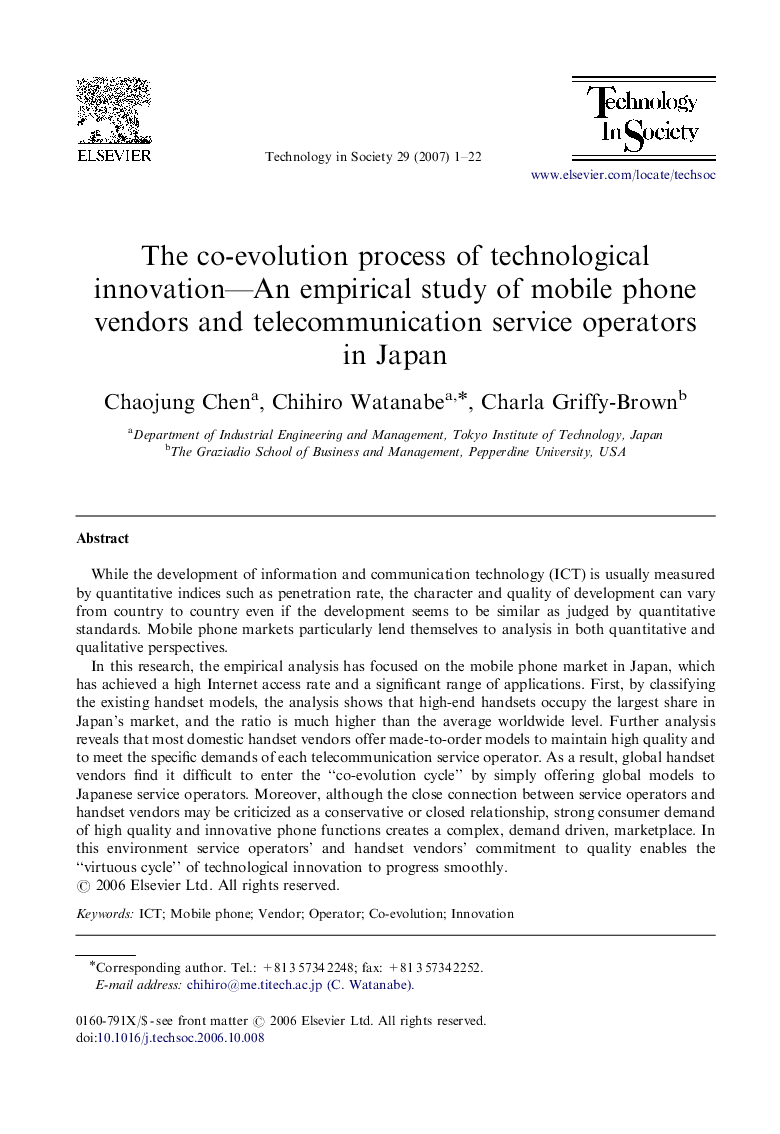| Article ID | Journal | Published Year | Pages | File Type |
|---|---|---|---|---|
| 375459 | Technology in Society | 2007 | 22 Pages |
While the development of information and communication technology (ICT) is usually measured by quantitative indices such as penetration rate, the character and quality of development can vary from country to country even if the development seems to be similar as judged by quantitative standards. Mobile phone markets particularly lend themselves to analysis in both quantitative and qualitative perspectives.In this research, the empirical analysis has focused on the mobile phone market in Japan, which has achieved a high Internet access rate and a significant range of applications. First, by classifying the existing handset models, the analysis shows that high-end handsets occupy the largest share in Japan's market, and the ratio is much higher than the average worldwide level. Further analysis reveals that most domestic handset vendors offer made-to-order models to maintain high quality and to meet the specific demands of each telecommunication service operator. As a result, global handset vendors find it difficult to enter the “co-evolution cycle” by simply offering global models to Japanese service operators. Moreover, although the close connection between service operators and handset vendors may be criticized as a conservative or closed relationship, strong consumer demand of high quality and innovative phone functions creates a complex, demand driven, marketplace. In this environment service operators’ and handset vendors’ commitment to quality enables the “virtuous cycle” of technological innovation to progress smoothly.
